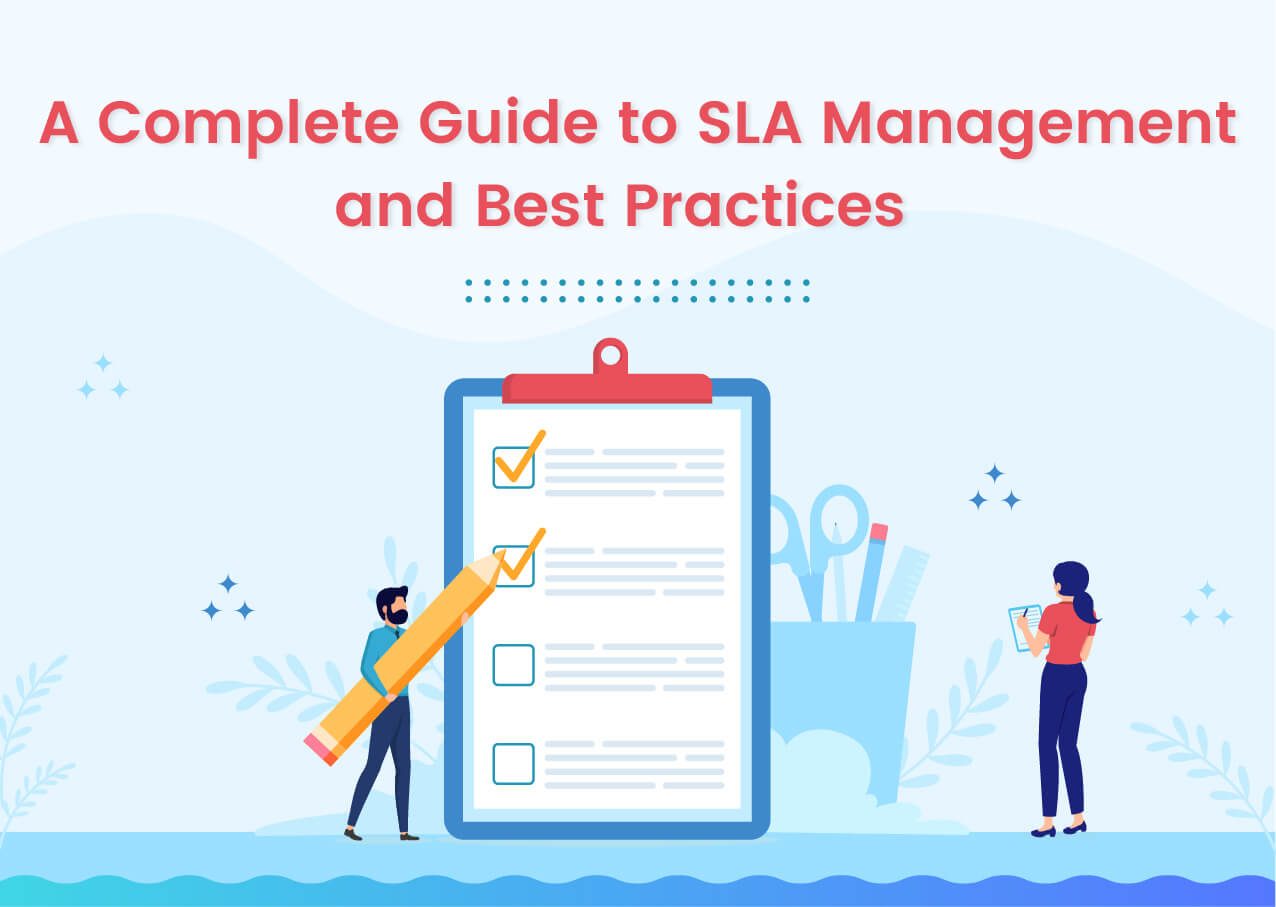Table of Contents
SLA management software is essential for customer service and any customer experience strategy. Achieving a service desk SLAs will depend on various factors, including the customer’s expectations, the complexity of their problem, your contract terms and conditions, and the relationship you have with that particular customer.
The SLA management process
The Service Level Agreement (SLA) management process is a key part of ensuring that your company’s IT infrastructure can meet the needs of your business. An SLA is a contract between a service provider and a customer that outlines the terms of the service being provided. The SLA management process ensures that all parties involved in the agreement are aware of their responsibilities and work towards meeting the agreement’s goals.
There are four key steps in the SLA management process:
- Service Level Agreement Development
- Service Level Agreement Monitoring
- Service Level Agreement Reporting
- Service Level Agreement Enforcement
Each of these steps is essential to ensuring that your company’s IT infrastructure can meet the demands of your business.
Let’s take a closer guide to SLA best practices,
Why is SLA management important?
Service Level Agreements, or SLAs, are important for managing expectations and ensuring quality control between service providers and customers. This guide will cover everything you need to know about SLA management, from best practices to common pitfalls. You’ll be equipped to create and manage SLAs that work for your business by the end.
What makes an effective SLA?
An effective service-level agreement (SLA) is key to any successful business relationship. It’s a written agreement that spells out the level of service that each party agrees to provide, and it sets expectations for both sides.
The best SLAs are clear, concise, and realistic. They should be based on a thorough understanding of the provided service, the resources required to deliver it, and the customer’s needs.
There are a few key elements that make an effective SLA:
- A clear definition of the services to be provided.
- Agreed-upon levels of service, including response times and uptime guarantees.
- Clear roles and responsibilities for each party.
- Regular reviews and audits to ensure that the terms of the agreement are being met.
An effective SLA can make all the difference in a successful business relationship. By setting clear expectations and holding both sides accountable, you can avoid misunderstandings and problems down the road.
The best practices for managing your SLAs
Your Service Level Agreement (SLA) is a contract between you and your service provider that outlines the terms of your agreement. It is important to have an SLA in place so that both parties understand the expectations and responsibilities.
Define clear objectives
The first step in managing your SLA is to define clear objectives. What are you trying to achieve with the SLA? What are your expectations? Once you have defined these objectives, you can communicate them to your service provider.
Set realistic expectations
It is important to set realistic expectations for your SLA. It won’t be easy to meet unrealistic expectations if you set unrealistic expectations. Work with your service provider to establish realistic targets for response times, uptime, etc.
Monitor and review regularly
Monitoring and reviewing your agreement SLA are critical to its success. You should track performance against the set targets and identify areas where improvement is needed. Reviewing the SLA will also help identify any changes that need to be made.
How do helpdesks enable you to manage SLAs in customer service?
There are a few key things that a helpdesk can do to enable you to manage SLAs in customer service:
Keep track of all SLAs in customer service
Escalate cases when necessary
When an SLA is not being met, the helpdesk should escalate the case to the appropriate team or individual. It will ensure that the issue is addressed promptly.
Follow up with customers
Once an issue has been resolved, the helpdesk should follow up with the customer to ensure they are satisfied. This feedback can be used to improve future SLA management.
How to manage SLA breach?
An SLA breach can have a major impact on your business, so it’s important to plan to deal with them effectively with SLA tools.
Here are some tips on how to manage SLA breaches:
- First and foremost, try to avoid them altogether by ensuring that you have clear and realistic SLAs and monitoring them closely.
- If a breach does occur, act quickly to mitigate the damage. Inform all affected parties and work with them to find a resolution.
- Be transparent throughout the process and keep everyone updated on the status of the situation.
- Learn from your mistakes and put processes in place to prevent future breaches.
Summing Up
Do you have any other tips for managing SLAs with SLA software?




